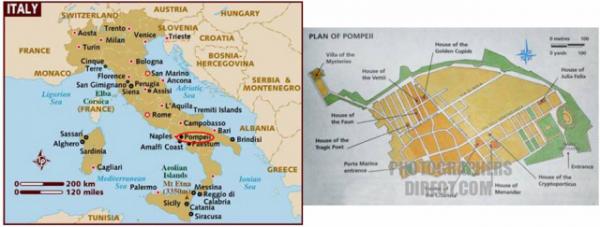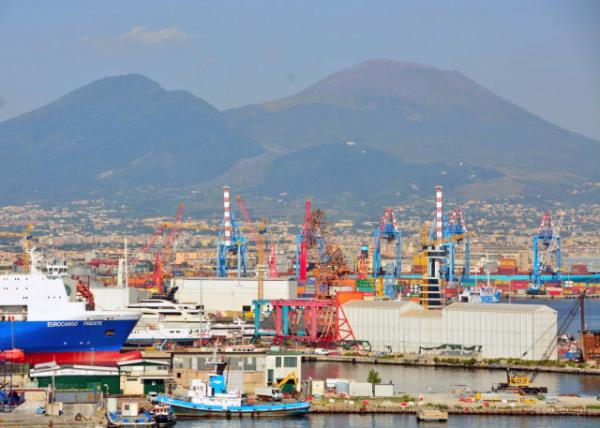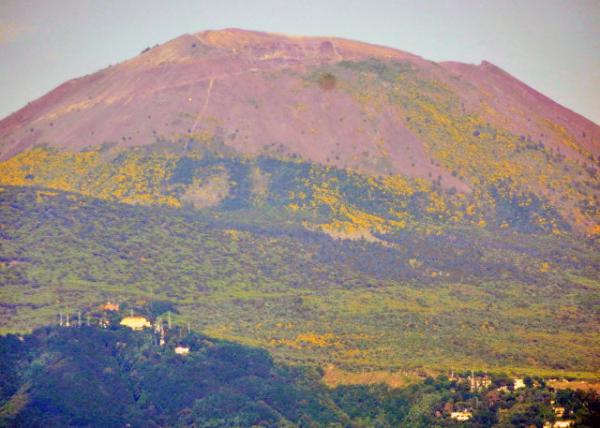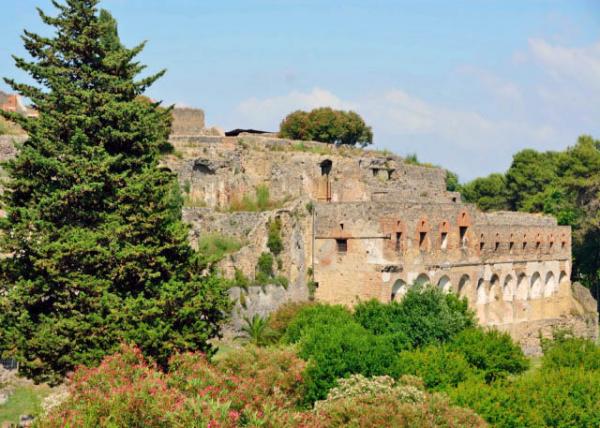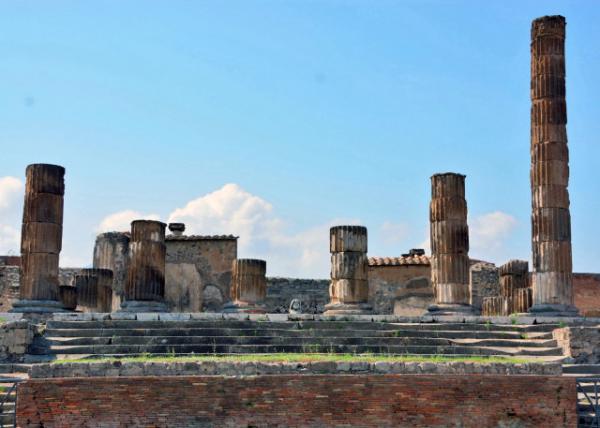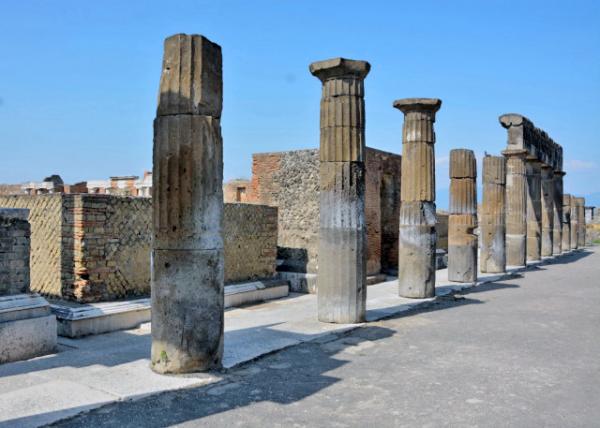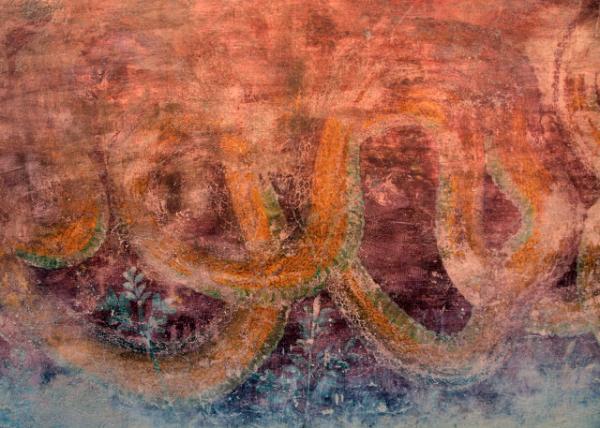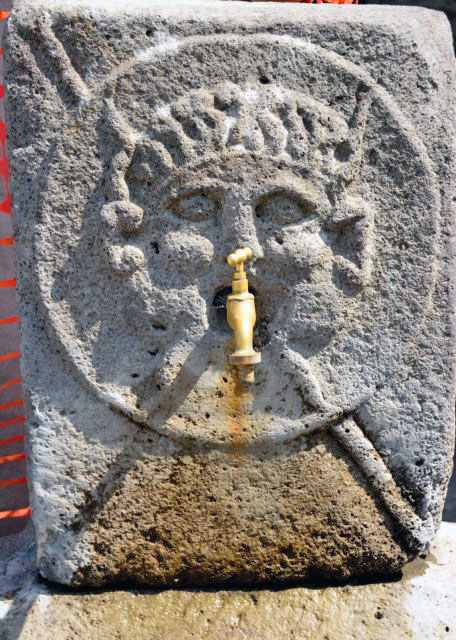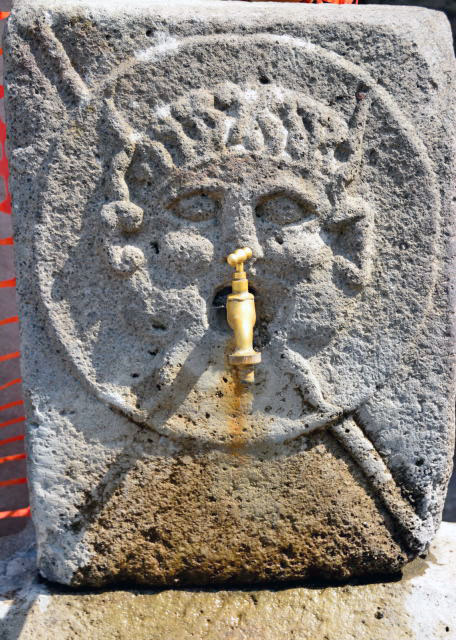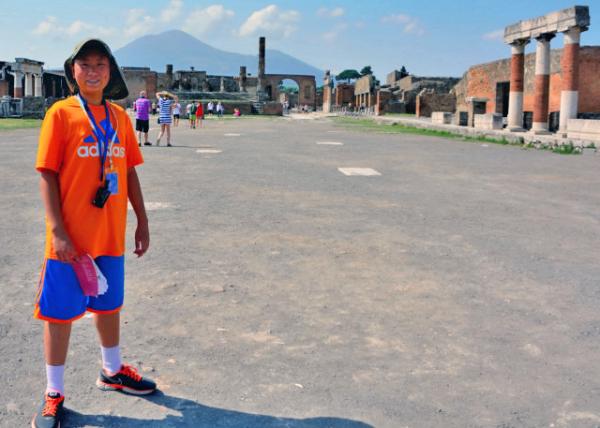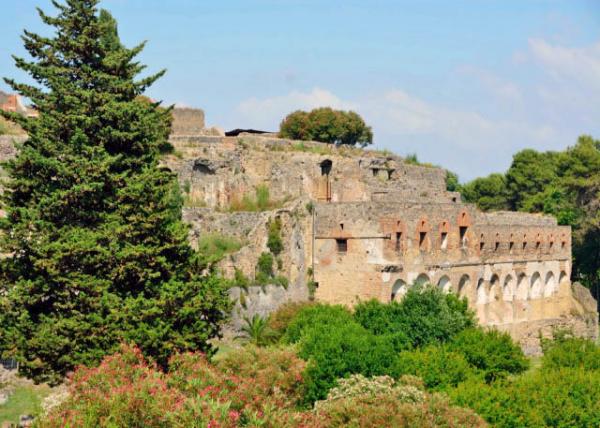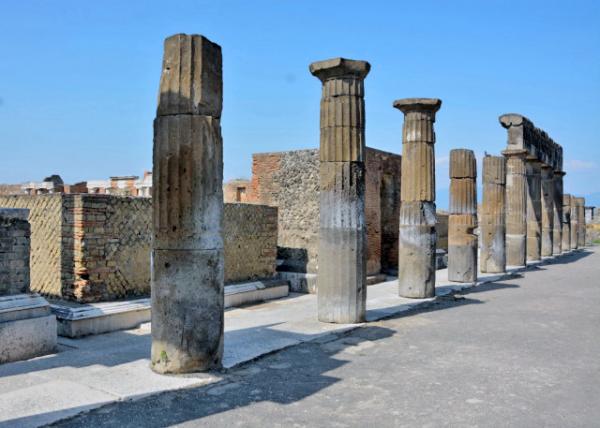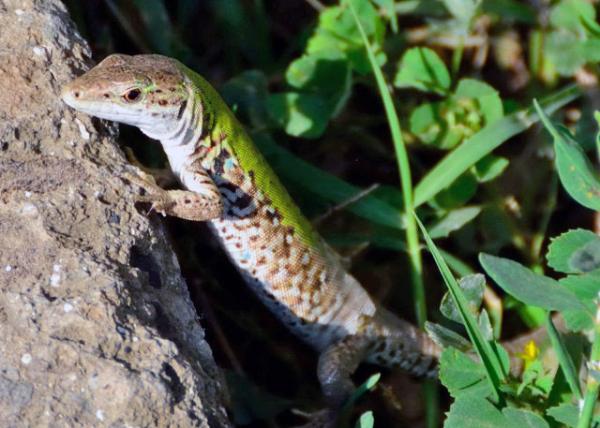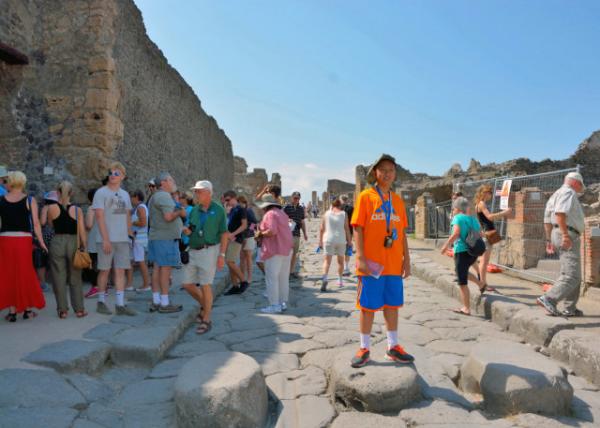| Archaeological Site of Pompeii, Italy(意大利庞贝古城) |
| 送交者: 天边的红霞 2020年04月27日08:33:07 于 [五 味 斋] 发送悄悄话 |
|
2015-06-14
【Aiden in English】 It doesn’t seem as if you wake up in the morning some random day to be covered in a sheet of burning ash. If you know what I mean, I’m talking about Pompeii of Italy, and reacquainting myself with the timeless power of nature. It was so tragic that the eruption of Mt. Vesuvius took place in 79 AD and completely buried the entire city. Pompeii was a thriving Roman city that was well-known as a vacation getaway for Rome’s beau monde and had tech far more advanced at the time. There were hundreds of houses and a strong social class system. Powerful rulers made a vigorous civilization. The population was shooting up and out of the charts. Fresh water was available, and resources were plentiful. They became the first to create a system of water drainage pipes under the city, acting as a sewage disposal system for the dirty water on the stone-paved streets. They understood the factors of sound, building an amphitheater that amplified the voice of the speaker. Of course, all things had to be destroyed. But Pompeii wasn’t conquered by armies, fallen into the Dark Ages with a weak ruler. They were leveled by Mt. Vesuvius. If the people of Pompeii were to point fingers, then blame the founders of the city for picking a spot 10 miles/16 km from an active volcano! There was nothing that could stop it either. What’s interesting is that the people weren’t killed by lava, but the ash. The burning flakes fell from the sky like rain, and people were covered upon a large sheet of it. The cloud of gas that was released from the volcano also made the air not breathable. As we proceeded into the ancient city, the guide explained that the upper part of the city was a reconstruct. The ash had burned away the top, and archeologists rebuilt it from clues of the remains. The scientists were also able to create a few statues of the dying people. How, you may ask, did they get them? Well, science today allows us to inflate the corpses into regular size. One person was covering his mouth trying to block out the gas. There wasn’t anything anyone could do. It seems like going to the beach for a week, and a hurricane kills you. Pompeii was that situation. Nature just decided at a certain time at a certain place to say: “Hey! I don’t like the clothes these people are wearing! Let’s make the volcano erupt and kill them!” Or something like this “I feel like destroying something today. Eeny-meeny-miny-moe! Pompeii it is!” Pompeii had no chance to survive. Life was just meant to be this way. Everything that starts has an ending. For Pompeii, it was just a little earlier. The people were thriving, and if it wasn’t for a particularly active and destructive volcano, there would be an enormous city built there today for all we know. It’s just that the finish line appeared closer than it seemed. 【红霞译文】 没准哪天清早醒来,周围所有一切全部烟灰余烬,倘若你稍有灵犀,即刻便会领悟到我所指的是意大利庞贝城,它让我重新认识自然界永恒的力量,公元七九年间维苏威火山的爆发给整个地区带来了灭顶之灾。 庞贝曾经红极一时,是古罗马帝王将相权贵阶层的度假胜地,拥有先进的技术工艺,城区广厦万间,社会等级森严,集权统治者积极推行文明建设,人口数量超大幅度地增长;城中建有自来水系统,物产资源丰富,不仅成为全球开发市区地下水管系统及石街污水排放体系的先驱,而且还掌握传声要素,挑头发展环形露天剧场天然扬声器的功效。当然,所有成就终究付之一炬,不过庞贝不是因黑暗时期庸君无能被军变颠覆,而是葬身于维苏威火山之下。如果后人对之心存不满,那么就把矛头指向其祖先好了,谁叫他们把古城建在距离活火山十英里即十六公里的地方!即使再有回天之力,也休想阻挡火山爆发。有趣的是,当地人并非丧命于滚滚熔岩,相反却被从天而降的烟灰粉片活埋窒息,火山释放的气流令人无法呼吸。 我们一边参观古城,一边聆听导游解说。庞贝上城现为修复区,考古学家根据粉尘之下的遗物推理而建,科学工作者依照僵尸姿势塑造了几个模型,你也许会问,他们怎么知道?是这么回事,如今科学发展到可以帮我们把尸体整合至原有形貌大小,其中有的人正用手捂着嘴巴防止异味进入口中。天灾人祸世事难料,好比去海边度假一周,飓风会将你置于死地,庞贝恰巧如此。大自然随时随地掰活:“嘿!我不喜欢人类这身打扮!让火山给他们点颜色瞧瞧!”或者换种口吻任性:“今天我想折腾一下,不是它就是它!来吧,庞贝!”庞贝无处躲无处藏,命中注定。 凡事有始有终。对于庞贝而言,灭亡来的稍微早了一点,人们正踌躇满志,要不是赶上特别活跃并且极富杀伤力的火山发威,大家都认为庞贝定会大放异彩,可惜好景不长。
|
|
|
|
|
 |
 |
| 实用资讯 | |
|
|
|
|
| 一周点击热帖 | 更多>> |
|
|
|
| 一周回复热帖 |
|
|
|
|
| 历史上的今天:回复热帖 |
| 2019: | 第三只眼睛看一带一路 | |
| 2019: | 首页刘强东一地鸡毛的文章,证明我当时 | |
| 2018: | 醒狮| 契约精神vs小聪明 | |
| 2018: | 毛粉团北韩出车祸,家属咋一声没吭尼? | |
| 2017: | 秋念11:西化,将是中华民族最深重的灾 | |
| 2017: | 专家们评估川普新税收计划(译文) | |
| 2016: | 随着床铺不断接近党内提名,媒体也似乎 | |
| 2016: | BBC: 吴弘达遇意外去世终年79岁 | |
| 2015: | 看了阿巫下面贴的那条假新闻,想起微信 | |
| 2015: | 哈哈。这些上海丐帮车模倒是挺可爱的。 | |




